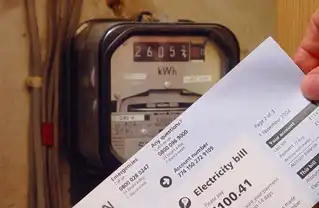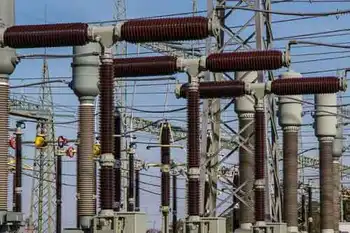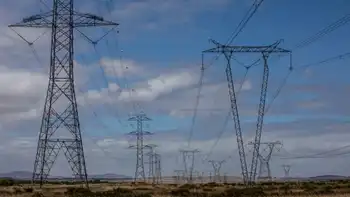Companies launch storage system for grid-scale applications
By Vionx Energy
Arc Flash Training CSA Z462 - Electrical Safety Essentials
Our customized live online or in‑person group training can be delivered to your staff at your location.

- Live Online
- 6 hours Instructor-led
- Group Training Available
The unique relationship brings together six global companies— United Technologies Corp. UTC, Starwood Energy Group, Siemens, 3M, VantagePoint Capital Partners and Jabil—to license, finance, manufacture and deploy the energy storage system.
“Recent changes to the energy system are creating completely new challenges for distribution grids”.
The companyÂ’s unique technology, a breakthrough vanadium flow storage system, was developed and engineered by researchers at UTC and is designed to make a long-duration, long-life grid-scale battery practical, resilient and cost efficient.
“At Vionx Energy we’re dedicated to providing grid storage solutions for the long run,” said David Vieau, Vionx Energy’s President and Chief Executive Officer and former Chief Executive Officer of lithium ion battery maker A123 Systems. “Through our innovative flow battery solution incorporating technology developed by United Technologies, we are confident our technology has an important role to play in the future of grid energy storage. Our unique eco-system of companies, including UTC, Siemens, and Starwood Energy, bring us the expertise and support to make Vionx Energy a leading grid storage supplier globally.”
“With the support of an Advanced Research Projects Agency-Energy ARPA-E* award, UTRC has developed a differentiated flow battery that enables cost-effective and reliable energy storage solutions,” said Dr. David Parekh, vice president, Research, and director, United Technologies Research Center. “We are excited to be part of this ecosystem of companies. Along with licensing this R&D 100 award-winning technology exclusively to Vionx Energy, we will continue to provide R&D support to Vionx as they further develop and commercialize this game-changing solution.”
Vionx will market, sell and service the technology, which is targeted to utility scale applications in transmission and distribution, microgrid and island markets. Vionx’s storage design boasts an in-situ process that maintains full storage capacity over a 20-year period – unlike other grid storage solutions such as lithium ion or lead acid. The result is a safe, long-running, affordable and flexible grid storage solution that provides utilities with added infrastructure resiliency and defers aging asset replacement costs.
“Recent changes to the energy system are creating completely new challenges for distribution grids,” said Dan Wishnick, Siemens Energy’s Sales and Business Development Manager. “The modern grid requires robust energy storage solutions that can provide value to smart grid users multiple hours a day year-after-year. As the engineering, procurement and construction provider to Vionx Energy, we believe the company’s flow battery technology can and will provide valuable long duration energy storage solutions for creating a balanced and resilient electrical grid. The collection of unique and prominent companies working with Vionx Energy is a testament to what Vionx’s technology can accomplish, and we’re excited to play a role in this new venture.”
The group is backed by a variety of energy finance heavyweights including Starwood Energy, and VantagePoint Capital Partners, among others. According to Brad Nordholm, Chief Executive Officer and Managing Director, Starwood Energy Group: “as an infrastructure investments specialist, we know the important role energy storage will continue to play in grid modernization globally and in meeting tomorrow’s energy demands in existing and emerging markets. We’re pleased to be an important part of Vionx and its impressive team.”
“The flow-battery system from Vionx reflects many years of concentrated design, testing and manufacturing expertise, as evidenced by the unique and highly qualified partners working with the company,” said Lee Burrows, Managing Director at VantagePoint Capital Partners, an early investor in Vionx Energy. “We are very pleased to be investors in Vionx and to witness the company emerging as an important leader in this critical and large-growth market.”
“Vionx’s energy storage system represents a significant advance in flow battery technology, and 3M is pleased to have the opportunity to draw upon our broad fuel cell, membrane and electrode assembly expertise to enable lower cost and longer life electrode assemblies for flow batteries. We view this technology as a key enabler for improved grid resiliency and the continued deployment of sustainable, renewable generation,” said Jeffrey Hohn, 3M’s Vice President of Renewable Energy.
“Business disruption across the energy sector is accelerating at record pace. At Jabil we focus on helping customers, like Vionx Energy with the world’s leading global manufacturing and design services,” said John Dargan, Jabil’s Senior Vice President of Corporate Development. “Vionx’s new flow battery technology will represent a leap forward for grid storage technology. As the exclusive manufacturer for Vionx’s storage system, we are proud to be part of the unique and influential group coming together to support Vionx energy and flow battery technology.”
Vionx Energy has recently delivered a large-scale storage system to the U.S. Army at Fort Devens in Massachusetts and is poised to announce additional projects in the coming weeks.
*ARPA-E is a United States government agency tasked with promoting and funding research and development of advanced energy technologies. The information, data, or work presented herein was funded in part by the Advanced Research Projects Agency – Energy ARPA-E, U.S. Department of Energy, under Award Number DE-AR0000149.











